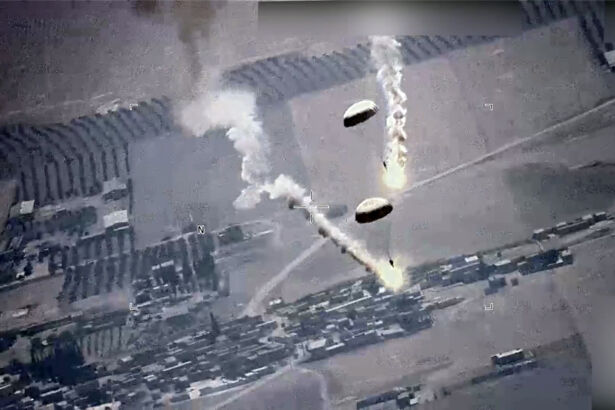The U.S. military released a new video on Wednesday showing Russian fighter jets flying dangerously close to multiple American drone aircraft carrying out a mission in Syria against the ISIS terrorist group.
In a statement on July 5, the U.S. Air Forces Central described the tense encounter as “unsafe and unprofessional behavior” by Russian airmen interacting with the U.S. military operating in Syria.
Lt. Gen. Alex Grynkewich, commander of the 9th Air Force and U.S. Central Command (CENTCOM) in the Middle East, said that three U.S. drones were operating over Syria on July 5 at 10:30 a.m. local time during a mission against ISIS when “three Russian fighter jets began harassing the drones.”
“Russian military aircraft engaged in unsafe and unprofessional behavior while interacting with U.S. aircraft in Syria,” Lt. Gen. Grynkewich said. “While three U.S. MQ-9 drones were conducting a mission against ISIS targets, three Russian fighter jets began harassing the drones.”
In the video, a Russian SU-35 fighter can be seen closing in on the MQ-9 Reapers, later also showing a number of so-called parachute flares moving into the drone’s flight path. The flares, which are attached to parachutes, prompted operators of the MQ-9 Reapers to take evasive maneuvers.

“Additionally, one Russian pilot positioned their aircraft in front of an MQ-9 and engaged afterburner, thereby reducing the operator’s ability to safely operate the aircraft,” Lt. Gen. Grynkewich added. “These events represent another example of unprofessional and unsafe actions by Russian air forces operating in Syria, which threaten the safety of both U.S. and Russian forces.”
Lt. Gen. Grynkewich urged Russian Air Force personnel in Syria to “cease this reckless behavior and adhere to the standards of behavior expected of a professional air force” so the U.S. military can continue its focus on the defeat of ISIS.
CENTCOM—which is one of the Pentagon’s 11 unified combatant commands responsible for protecting U.S. security interests in an area stretching from the Horn of Africa to Central Asia—has not provided details about its anti-terror drone operation in Syria, nor did it provide information over which skies the close encounter took place.
Roughly 900 U.S. forces are currently deployed in Syria to battle ISIS alongside the Kurdish-led Syrian Democratic Forces.
The incident comes just weeks after CENTCOM announced in mid-June that it was deploying F-22 Raptors to the Middle East in the wake of Russian aircraft engaging in “increasingly unsafe and unprofessional behavior” above U.S. bases in Syria.
“Russian Forces’ unsafe and unprofessional behavior is not what we expect from a professional air force,” Army Gen. Michael “Erik” Kurilla, head of CENTCOM, said at the time. “Their regular violation of agreed upon airspace deconfliction measures increases the risk of escalation or miscalculation.”
War on Terrorism
Last month, CENTCOM conducted a total of 37 D-ISIS operations in Syria and Iraq, resulting in 13 ISIS members killed and 21 detained, the Pentagon said in a statement on Thursday, releasing a breakdown of military operations for June by country.
Gen. Kurilla, commending the professionalism and dedication of U.S. coalition partner forces, said the U.S. military can only succeed in defeating ISIS “through sustained and comprehensive partnered operations.”
“The continued reduction in ISIS activities in Iraq and Syria are a testament to our partner forces’ commitment to the safety and stability of the region,” said Maj. Gen. Matthew McFarlane, commanding general of the Combined Joint Task Force. “The Coalition continues to advise, assist, and enable our partners in the lead toward an enduring defeat of ISIS.”

